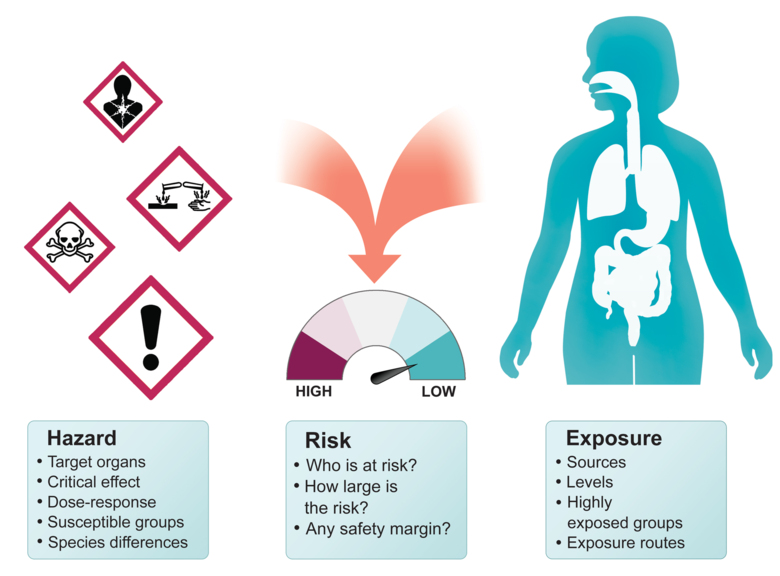Environmental health risk assessment at IMM
At IMM, we specialize in conducting environmental health risk assessments for chemical and physical environmental factors. These assessments encompass factors found in public environments, home environments, and workplaces.
Our primary objective is to provide scientific evidence to support measures and decisions taken by authorities in order to safeguard public health. Additionally, IMM serves as a hub for developing innovative risk assessment methodologies, and our experts frequently contribute to expert panels both domestically in Sweden and internationally.
The goal of environmental medical risk assessment is to prevent health issues based on sound scientific principles, ensuring the protection of individuals' health across their lifespan. Our research activities span from local concerns to broader international issues. Our team of researchers possesses expertise in exposure assessment, toxicology, and epidemiology, and their investigations span multiple levels of analysis, ranging from the molecular and cellular levels to individual and population levels. This interdisciplinary approach is crucial in environmental medicine risk assessment as it requires the integration of information from various research domains.
Read about the interaction between health risk assessment and research

The process of environmental health risk assessment
Environmental health risk assessment is a process aimed at estimating the potential health effects resulting from exposure to singular or combined environmental factors. It may also involve the determination of safe exposure levels, such as guideline values and limit values. Some assessments focus on investigating risks associated with past exposures, while others generate evidence regarding the potential health risks posed by specific chemicals or environmental factors.
Various legislative frameworks require risk assessments to be conducted. For instance, industries and companies engaged in the manufacturing, handling, and marketing of substances. Food additives and chemical residues in food must also comply with similar requirements. Environmental health risk assessments often serve as a crucial foundation for decision-making processes when evaluating different strategies to minimize risks.
By describing the hazards associated with a chemical and integrating knowledge of exposure patterns, it becomes possible to assess the overall risk (Figure). Environmental health risk assessment is typically divided into five steps according to the terminology employed by organizations such as the WHO and the EU: problem formulation, hazard identification, hazard characterization, exposure assessment, and risk characterization (Table).
The five steps of health risk assessment (Source: WHO, 2021)
| Step | Description | Content |
|---|---|---|
| 1. Problem formulation | Describes purpose and objective as well as what uncertainty is acceptable | Framing the question / Previous knowledge / Available resources |
| 2. Hazard identification | Identifies possible adverse health effects | Human studies / Animal studies / In vitro studies / Computer models |
| 3. Hazard characterization | Describes in qualitative and quantitative terms which negative health effects an environmental factor can cause | Critical data / Mechanisms / Kinetic variations / Biological differences / Dose-response relationship |
| 4. Exposure assessment | Describes the exposure in the population specified in the problem formulation | Population data / Sources / Level and duration / Exposure routes |
| 5. Risk characterization | Basis for risk management | Adversity / Sensitive groups / Uncertainty / Margins of safety |
(1) Problem formulation. Before initiating a risk assessment, it is necessary to define the specific problem and the questions that need to be answered. For instance, the goal could be to calculate the risk following a release or to identify a safe exposure level in a workplace.
(2) Hazard identification involves determining the health-related effects that a chemical of environmental factor can cause.
(3) Hazard characterization focuses on the level of exposure that leads to different effects, and sometimes involves the calculation of a health-based reference value. This reference value represents the level of exposure that a person can tolerate without incurring a risk of experiencing adverse health effects.
(4) Exposure assessment entails identifying sources and pathways of exposure and calculating the exposure level in the specific scenario.
(5) Risk characterization integrates all available information in a meaningful way. This step may involve determining whether the exposure in a particular population exceeds a health-based reference value or estimating the number of affected individuals.
In environmental health risk assessment, various uncertainties need to be considered. Detailed knowledge is often lacking, and there is substantial variation among individuals. For example, the early development of children is particularly sensitive to many environmental factors, and certain chronic diseases can increase the risk. The presence of complex mixtures of environmental factors influenced by various lifestyle factors further adds to the challenge. At IMM, extensive research is conducted to improve the understanding and management of these types of difficulties.
Read more about environmental health risk assessment
WHO (2021) WHO Human Health Risk Assessment Toolkit: Chemical Hazards, second edition.
